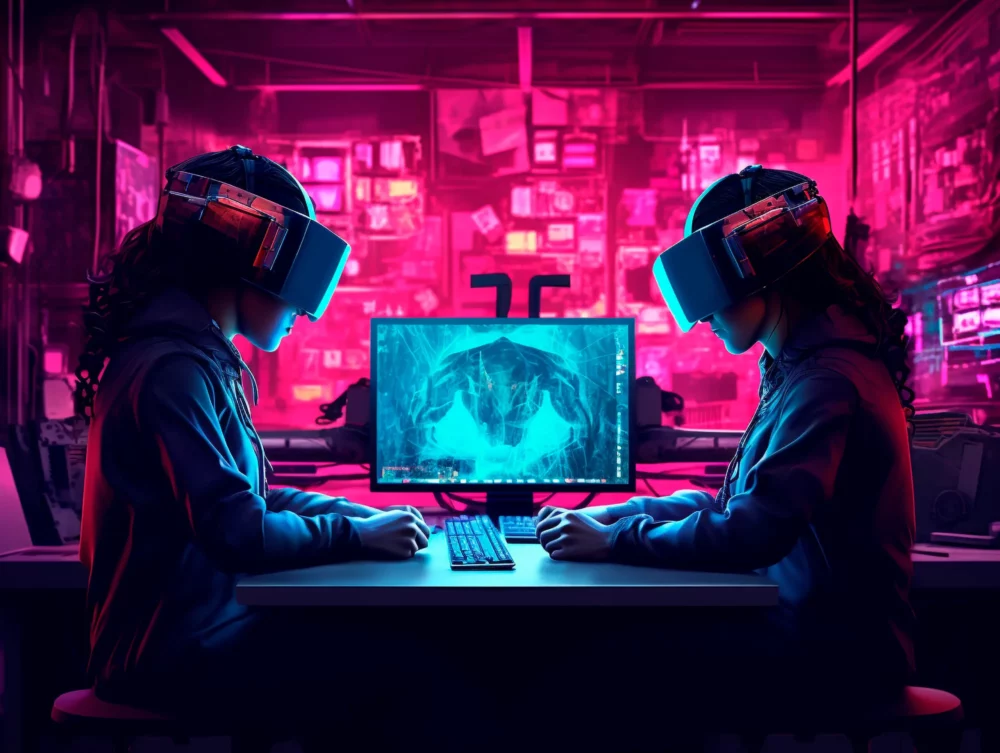Have you ever completely lost yourself in a game, to the point of forgetting the world around you? That feeling of being entirely within the experience is what we call immersion. And in the world of games, immersion is the key to transforming a good game into a truly unforgettable experience. But how do developers achieve this level of engagement?
In this article, we’ll dive into the crucial elements creators use to build virtual worlds so captivating that they make us forget we’re just holding a controller or clicking a mouse. Whether you’re a gamer looking for new perspectives or an aspiring developer, get ready to uncover the secrets behind the most immersive experiences!
The Triad of Immersion: Visual, Sound, and Narrative
To create a truly immersive gaming experience, developers work with a synergy of visual, sound, and narrative elements. Ignoring one of them is like trying to build a house with only two walls.
Graphics That Tell Stories
Graphics are the first gateway to immersion. It’s not just about having the most advanced technology, but about how art and visual design contribute to the atmosphere and credibility of the world.
Consistent Art Direction: A cohesive visual style, whether realistic, cartoony, or stylized, helps the player feel part of that universe. Think of the melancholic beauty of Hollow Knight or the gritty realism of Red Dead Redemption 2.
Details That Make a Difference: Small visual elements, such as textures, dynamic lighting, and even how characters interact with the environment, increase the sense of reality and presence.
Immersive UI/UX: Well-thought-out user interface (UI) and user experience (UX) minimize distractions. The less the player has to exit “game mode” to understand information, the more immersive the experience becomes. Interfaces that integrate naturally into the game world, like Fallout’s Pip-Boy, are masters at this.
The Power of Audio: More Than Just Sound Effects
Often underestimated, audio design is a fundamental pillar of immersion. It’s capable of evoking emotions, warning of dangers, and adding layers of depth to the environment.
Atmospheric Soundtrack: A good soundtrack isn’t just accompaniment; it’s a character in itself. It can intensify moments of tension, celebrate victories, or convey a sense of solitude. Games like The Last of Us and Doom Eternal are perfect examples of how music amplifies the experience.
Realistic Sound Effects: From the creak of an old door to the sound of footsteps on different surfaces, precise and believable sound effects reinforce the feeling of presence in the game world.
Positional Sound Design (3D Audio): The ability to identify the direction of a sound is crucial for immersion and gameplay, especially in horror or shooter games. Hearing an enemy approaching from behind or a sniper’s shot in the distance heightens tension and realism.
Narrative and World-Building: The Heart of the Experience
An engaging narrative and a well-constructed world give purpose to exploration and interaction, transforming simple actions into meaningful experiences.
Captivating Stories and Memorable Characters: Whether a linear or branching plot, a good story with well-developed characters generates empathy and keeps the player emotionally engaged. We want to know what happens next, and we care about the protagonists’ fates.
Detailed World-Building (Lore): The richness of detail about the history, culture, and inhabitants of a virtual world makes it more believable and interesting. Even if not everything is explicitly told, the feeling that there’s a larger story behind every corner increases the desire to explore.
Player Agency and Meaningful Choices: Giving the player the ability to make decisions that truly impact the story or game world increases the sense of control and responsibility, deepening immersion.
Beyond the Basics: Additional Elements That Enhance Immersion
While visual, sound, and narrative pillars are essential, other elements can take immersion to an even deeper level.
Haptic Feedback and Tactile Response: The vibration of a controller at specific moments, the resistance in triggers (like on the PS5’s DualSense), or even the feel of an arcade joystick can add a physical layer to immersion, connecting the player more viscerally to what’s happening on screen.
Social Immersion (Multiplayer Games): In online games, interaction with other players, whether cooperative or competitive, creates a unique layer of social immersion. The feeling of belonging to a community or facing challenges with friends adds a human dimension to the experience.
Virtual Reality (VR) and Augmented Reality (AR): These technologies are the pinnacle of immersion, physically transporting the player into the virtual environment (VR) or overlaying digital elements onto the real world (AR). While still evolving, the potential for immersion is immense.
Conclusion
Immersion is not an accident; it’s the result of meticulous work and the harmonious union of various elements. Developers who understand and apply these principles are capable of creating unforgettable gaming experiences that transcend entertainment and become part of our memories.
As players, we are the beneficiaries of this incessant pursuit of immersion. And as creators, the challenge and reward lie in building these captivating worlds that transport us beyond the screen.

